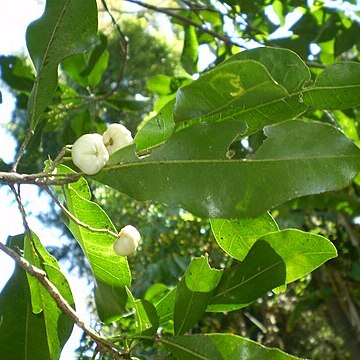An evergreen tree. It grows to 10-25 m high and spreads 2-7 m across. The stem is erect and branching. The leaves are oblong and wider at the end away from the stem. They are 3-12 cm long by 1-5 cm wide. The leaves are dark green, shiny and leathery. The flowers are small and white. The are about 1 cm across and only a few flowers occur in a branched flower stalk. The fruit is white, yellow or blue and fleshy. It is edible.


